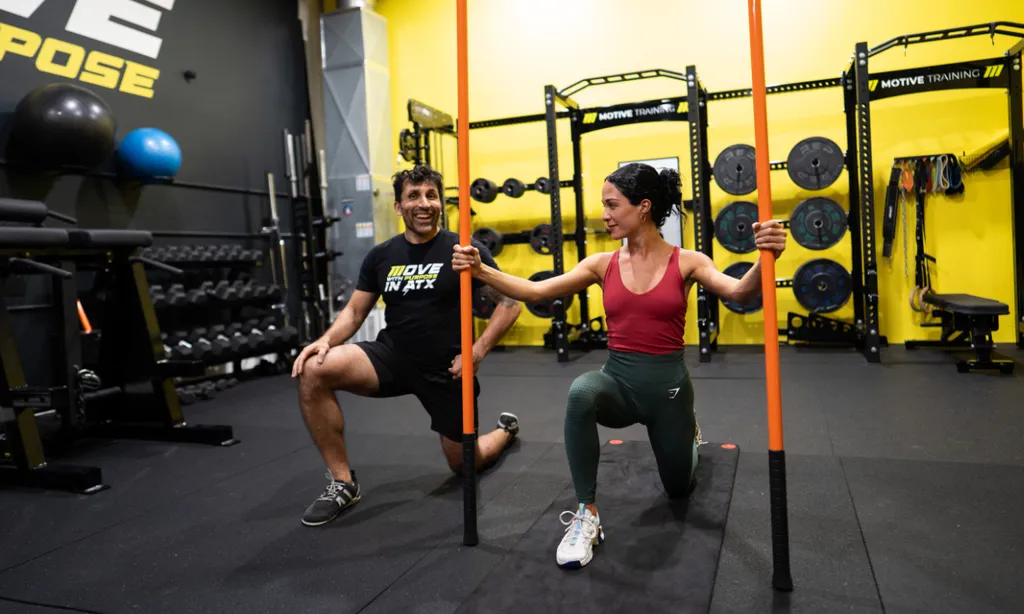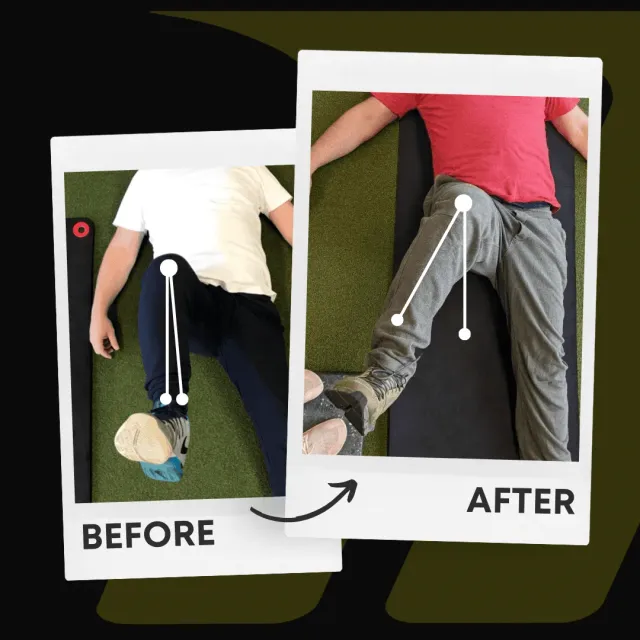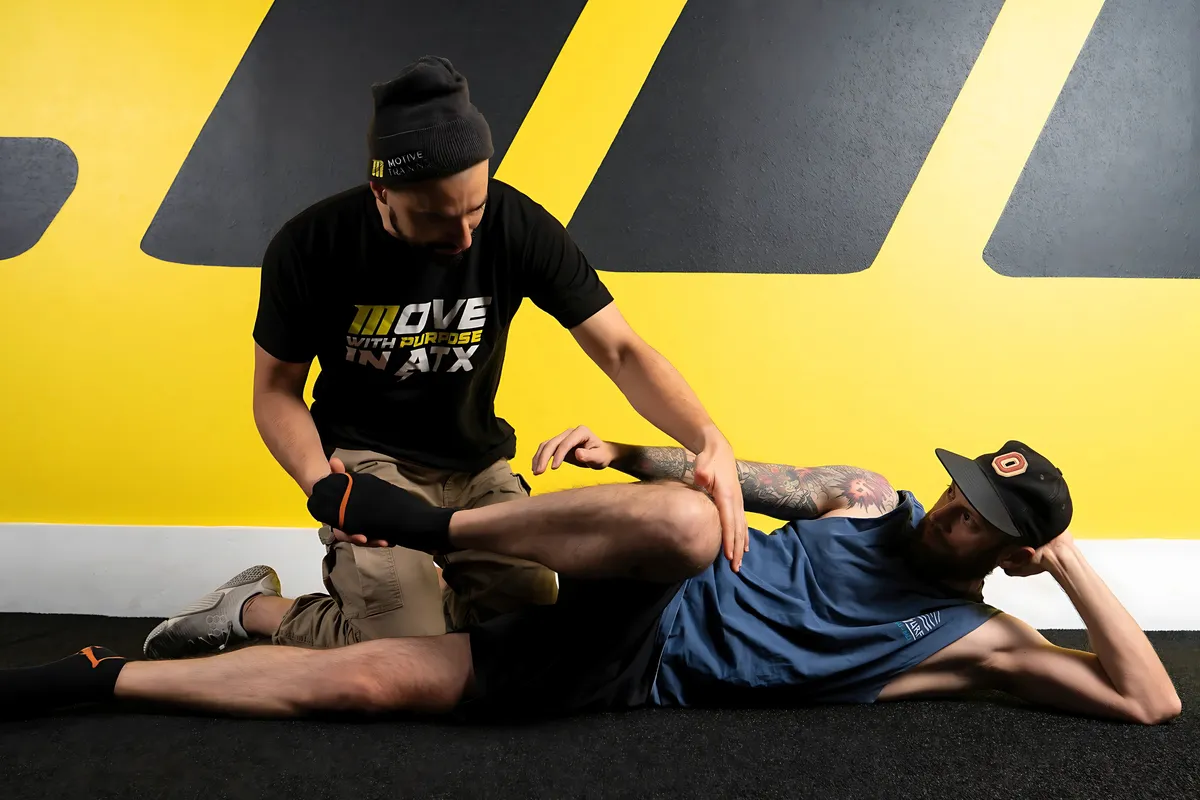Should You Use StretchLab?
July 21, 2024 | Stretching

In the fitness world, stretching has exploded into a full-blown industry. Studios like StretchLab market themselves as the answer to pain, stiffness, and poor mobility. Their model is simple: you walk in, lie on a table, and let someone else stretch you. It’s convenient, feels good in the moment, and offers a polished wellness experience.
But here’s the real question: does it actually improve your mobility and movement long-term, or is it just a temporary fix?
Let’s dig deeper.
Why StretchLab Feels Good (But Doesn’t Last)
Most sessions at StretchLab are built on passive stretching, sometimes with light contract-relax methods like PNF. This approach has two key limitations:
- Short-Term Neurological Tricks: Passive stretches work by convincing your nervous system to briefly allow more motion. It feels like progress, but the nervous system resets quickly. That’s why after a few hours—or the next day—you’re back to feeling tight.
- No Tissue Remodeling: Long-term mobility comes from applying controlled load into new ranges of motion. Without strength at those end ranges, your body won’t adapt. You can’t bypass the need for active engagement.
If you’ve ever left StretchLab feeling loose only to tighten up the next morning, you’ve experienced this limitation firsthand.
Why Mobility Requires More Than Stretching
Mobility isn’t just flexibility. It’s strength and control at your joints. At Motive Training, we rely on Functional Range Conditioning (FRC), a system that prioritizes active inputs over passive tricks.
- Joint Control: Tools like Controlled Articular Rotations (CARs) teach your nervous system how to actively use and expand your ranges. (Learn more in our deep dive on CARs .)
- Tissue Remodeling: Inputs like PAILs/RAILs gradually reshape connective tissue and improve long-term mobility. Here’s a full breakdown.
- Pain Reduction: By addressing the root of dysfunction instead of just masking stiffness, FRC helps with lasting pain relief. We explain this in detail in How Functional Range Conditioning Unlocks Pain-Free Living.
Mobility training is about teaching your body to own new positions, not just borrow them temporarily.
The Education Gap at StretchLab
Here’s something most people don’t know: StretchLab “Flexologists” don’t go through rigorous training like licensed physical therapists or FRC-certified coaches. Often, it’s just a weekend certification. Compare that to years of study and application behind evidence-based systems like FRC, and you see the difference.
StretchLab also leans heavily on Fascia Stretch Therapy™ (FST). While FST has merit when used by skilled practitioners, the quick certification model raises concerns. Complex issues like joint pain, postural imbalances, or mobility restrictions require far more nuance than what can be covered in a short course.
Who Actually Benefits From StretchLab?
To be fair, StretchLab isn’t useless. For some people, it may serve a purpose:
- Those seeking short-term relaxation and spa-like services.
- People who enjoy a guided stretching session without needing long-term change.
- Clients with no major pain or dysfunction who simply want to “feel looser” for a few hours.
But here’s the catch: those groups make up a small percentage of the people who seek help for mobility. At Motive Training, we work with three main client types:
- Pain & Injury Conquerors: People dealing with stiff backs, sore hips, or nagging shoulders who have tried other solutions with limited success. Passive stretching rarely solves their root issues.
- Athletic Performance Seekers: Austin is packed with cyclists, golfers, and weekend warriors. For them, true performance means stronger, healthier joints—not just temporary lengthening.
- Lifestyle Enhancers: Many of our clients just want to feel better day-to-day, whether that means being able to sit through work without pain, keep up with their kids, or enjoy hiking the Greenbelt.
StretchLab doesn’t meet these needs because it doesn’t assess or address the deeper restrictions causing pain or holding back performance.
StretchLab vs. Motive Training: Key Differences
| StretchLab | Motive Training |
|---|---|
| Passive stretching on a table | Active mobility training with load |
| Short-term relief | Long-term adaptation |
| Quick staff certifications | FRC-certified, experienced coaches |
| One-size-fits-all sessions | Individualized programs |
The Austin Factor: Why Our City Needs More Than Stretching
Austin’s culture of long desk hours, outdoor sports, and active weekends makes mobility training essential. You’ll see:
- Tech professionals sitting for 8–10 hours daily, winding up with tight hips and rounded shoulders.
- Cyclists and runners hitting Town Lake trails or long rides in the Hill Country, often with limited hip or ankle mobility.
- Musicians and creatives spending hours rehearsing or performing, dealing with repetitive-use injuries in wrists and shoulders.
These issues don’t improve with a few stretches on a table. They require structured mobility training, personalized assessments, and long-term strategies—things we deliver at Motive Training every day. Learn more about our mobility coaching in Austin.
Why Motive Training Is the Smarter Alternative
At Motive Training in Austin, we specialize in long-term solutions for pain, mobility, and performance. Every client starts with a Functional Range Assessment (FRA) to identify joint limitations and root causes. From there, we design a program tailored to you—not a cookie-cutter routine.
Here’s what sets us apart:
- Science-Backed Inputs: We use FRC and end-range mobility training, not passive tricks. Explore more about this in our guide to End-Range Mobility Training.
- Certified Coaches: Our trainers are deeply educated in joint mechanics and mobility science.
- Sustainable Progress: Instead of chasing temporary relief, we help you build resilience that lasts.
Whether you’re overcoming pain, preparing for a sport, or simply wanting to feel better day to day, this approach works. You can see examples in our client results.
Expanded FAQs
Is StretchLab worth it for mobility?
It can feel good, but it won’t create lasting mobility improvements. Active, loaded training is required for long-term change.
Is StretchLab the same as physical therapy?
No. Physical therapists diagnose and treat injuries. StretchLab staff are not medical professionals, and their training is minimal compared to licensed providers.
How does StretchLab compare to yoga?
Yoga combines movement, breath, and positions that can improve flexibility and strength. StretchLab focuses only on passive stretching, which is far more limited. If you’re looking for a mobility-first alternative, read our guide on Should You Do Yoga? .
Can mobility training replace stretching?
Mobility training goes beyond stretching by adding strength, control, and resilience. That’s why programs like KINSTRETCH Online are so effective for long-term results.
Final Thoughts
StretchLab is a polished concept that markets the idea of mobility. But if your goal is to fix pain, perform better, and move with confidence, you need more than a stretch. You need assessment, coaching, and a science-backed plan that grows with you.
At Motive Training, we do exactly that. From your first Functional Range Assessment to customized mobility programs, we give you lasting tools instead of temporary relief.
If you’re in Austin and ready to move better, schedule with us today.
Written by
Brian Murray, FRA, FRSC
Founder of Motive Training
We’ll teach you how to move with purpose so you can lead a healthy, strong, and pain-free life. Our headquarters are in Austin, TX, but you can work with us online by signing up for KINSTRETCH Online or digging deep into one of our Motive Mobility Blueprints.

